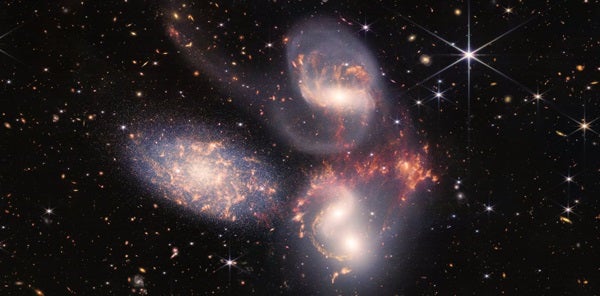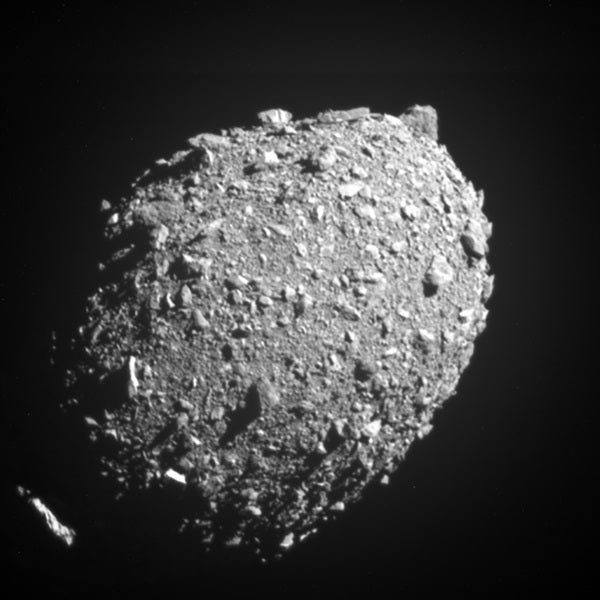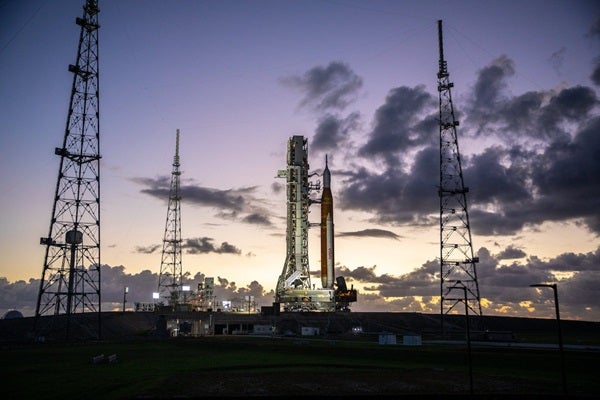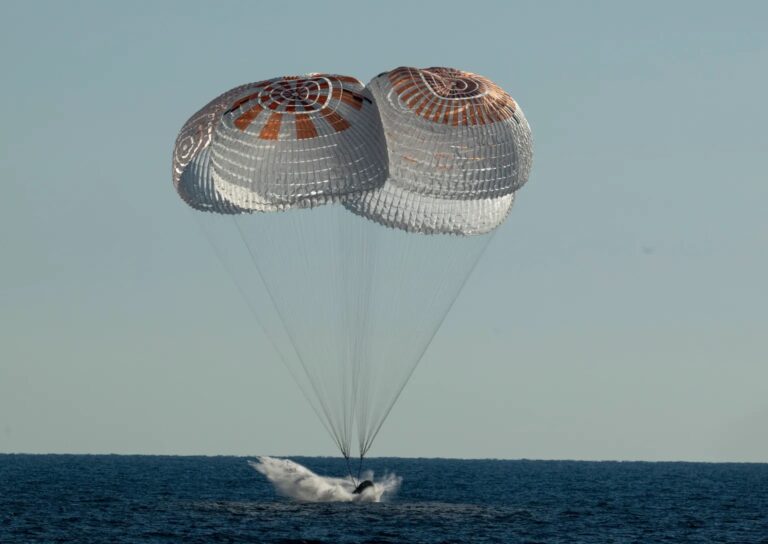NASA had a banner year in 2022, with many successful missions in what was one of the organization’s most active years in decades.
I’m a professor of astronomy who has used NASA telescopes for decades to do research in observational cosmology. I also have a keen interest in the role science plays in humanity’s expansion into space.
NASA’s missions over the past year have been remarkably far-ranging — from practicing how to protect Earth to preparing for the first manned mission to Mars and learning about the earliest days in the universe. By working in the extremes, scientists are learning about and doing more in space than ever before.
Near and far
Some NASA missions in 2022 focused on protecting or learning more about Earth, while other missions were focused as far from Earth as possible.
Close to home, NASA nudged an asteroid off its trajectory, successfully demonstrating technology that could save Earth if an asteroid or comet was on a collision course with Earth.
The Double Asteroid Redirection Test, or DART, slammed the 1,340-pound (610-kilogram) DART spacecraft into an 11 billion-pound (5 billion-kilogram) asteroid called Dimorphos. Dimorphos is the smaller of a pair of asteroids that flew past Earth last year. The impact happened 6 million miles (11.7 million kilometers) from Earth and altered the asteroid’s orbit by a small but measurable amount.
Dimorphos and its twin, Didymos, were never a threat to humanity, but NASA tracks potentially hazardous near-Earth objects for a reason, and DART showed that it would be possible to protect Earth from an asteroid impact.
NASA has also been studying water both near Earth and in distant solar systems. On Dec. 16, 2022, a Space-X rocket carried NASA’s Surface Water and Ocean Topography satellite into orbit. This satellite will be looking down at Earth for three years in an attempt to survey nearly all the water on Earth’s surface. The resulting data will be crucial in understanding how climate change is altering the world’s oceans.
Looking out instead of down, NASA satellites also found two “water worlds” in a single star system 218 light years away. The planets are super-Earths, about 50% bigger than our planet, but they have thousands of times more water.
On average, Earth’s oceans are about 2.5 miles (4 kilometers) deep. These two newly discovered exoplanets are covered in oceans 1,250 miles (2,000 kilometers) deep. The data astronomers are collecting on these planets is offering some of the best clues to date about these common super-Earths that may be more hospitable to life than Earth.
Finally, the new James Webb Space Telescope has been looking for distant galaxies as far from Earth as possible. Distant light is old light, so the James Webb Space Telescope is capturing images of galaxies from the first few hundred million years of the universe, allowing astronomers to learn a lot about what the infant universe was like.
Cheap and expensive
The James Webb Space Telescope was originally budgeted at $1 billion in the early 2000s. By the time Webb launched, that price tag had ballooned to an astonishing cost of $10 billion. But Webb was not the only expensive NASA mission from 2022.
After numerous delays, the Artemis 1 mission had a successful flyby of the Moon before it splashed down on Dec. 11, 2022 – 50 years to the day after Apollo 17 was the last American spacecraft to land on the Moon.
Artemis 1 is the first in a series of NASA missions that aim to return U.S. astronauts to the Moon by 2030 and eventually establish a Moon base. Each launch is estimated to cost around $4.1 billion, with the entire program – including four initial launches and associated research and development – expected to cost an eye-popping $93 billion.
While many recent missions have been among the most ambitious and expensive in the history of space, in some ways 2022 was also the year space became cheap. NASA launched more than a dozen CubeSats, shoe-box-sized satellites that can do science experiments in orbit at a cost of only $50,000 each. CubeSats weigh just a few pounds, and thanks to their small size and the ever-decreasing cost of rocket launches, even students can get an experiment into space. Almost 4,000 have been launched, a number that’s projected to double within six years.
The streaks in this video from the Parker Solar Probe are structures called coronal streamers that are part of the surface of the Sun.
Hot and cold
2022 also saw some of the hottest and coldest temperatures encountered by any spacecraft in history.
Since its launch in August 2018, the Parker Solar Probe has been making closer and closer passes to the Sun, and on Dec. 11, 2022, it swooped past Earth’s star at just over 5 million miles (9 million kilometers) from the surface. The probe reaches incredible speeds as it passes the Sun and set the all-time speed record for a spacecraft at 364,000 mph (586,000 kph) in 2021.
During each pass, the car-sized craft reaches a toasty 2,500 degrees Fahrenheit (1,371 Celsius) and is able to not only survive the heat but also measure the physical conditions in the outermost layers of the Sun. That data is helping astronomers better understand solar wind, the stream of high-energy particles that can interfere with electronics and telecommunications on Earth.
Meanwhile, the Voyager 1 spacecraft continued its exploration of interstellar space. Since its launch in 1977, Voyager 1 and its twin, Voyager 2, have been traveling away from Earth. At a distance of 14.8 billion miles from Earth (22.5 billion kilometers) and counting, Voyager 1 is now the farthest human-made object from the Sun, and therefore also the coldest. The temperature beyond the edge of the Solar System where Voyager 1 now roams is a frigid 3 degrees above absolute zero, roughly minus-454 F (minus-270 C).
The venerable spacecraft suffered a data glitch in May 2022, but despite the 22-hour travel time for a radio signal to travel between Voyager 1 and Earth, NASA engineers were able to restore full function to the craft.
Volume and longevity
NASA accomplished some incredible feats in 2022, but the organization’s pace is slow and steady compared to frenetic activity in the private sector.
Last year set a record for the volume of space activity. There were 186 launches, all but six of which were successful. Space-X accounted for 61 orbital launches, doubling its total for 2021.
Some of NASA’s achievements in 2022 were the result of persistence and durability. A U.S. citizen spent a record 355 days in orbit, setting the record for the longest single spaceflight. This year also marked the 22nd year of continuous human presence on the International Space Station, and the 25th year of continuous robotic exploration of Mars.
The ancient Roman poet Virgil coined the phrase “ad astra per aspera,” or “to the stars through difficulties,” and this last year has shown that human efforts can overcome difficulties and reach for the stars.
![]()
Chris Impey, University Distinguished Professor of Astronomy, University of Arizona
This article is republished from The Conversation under a Creative Commons license. Read the original article.












